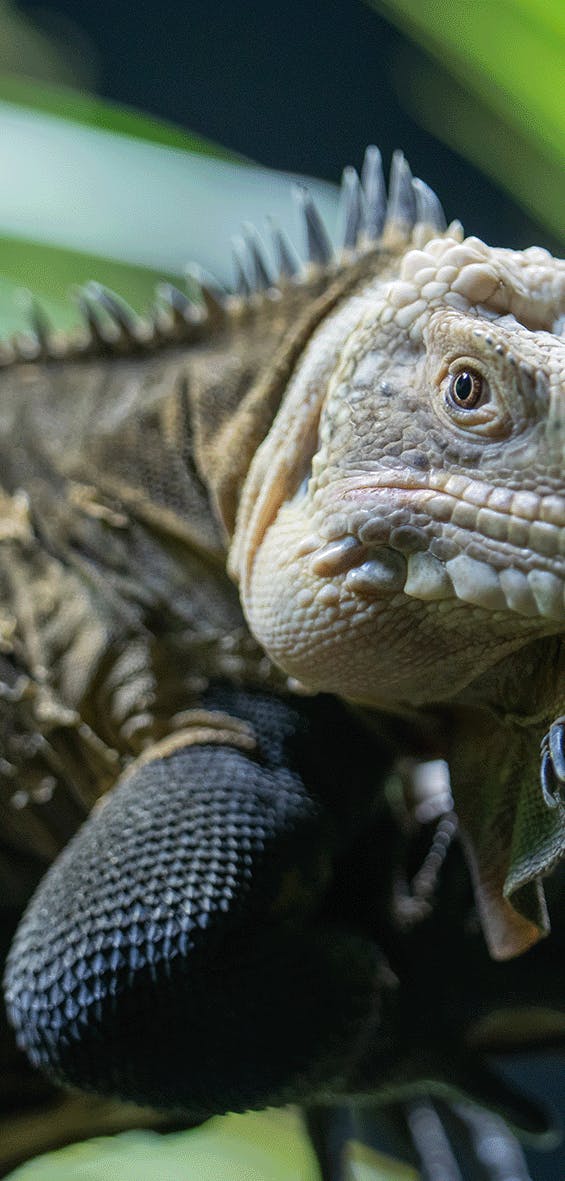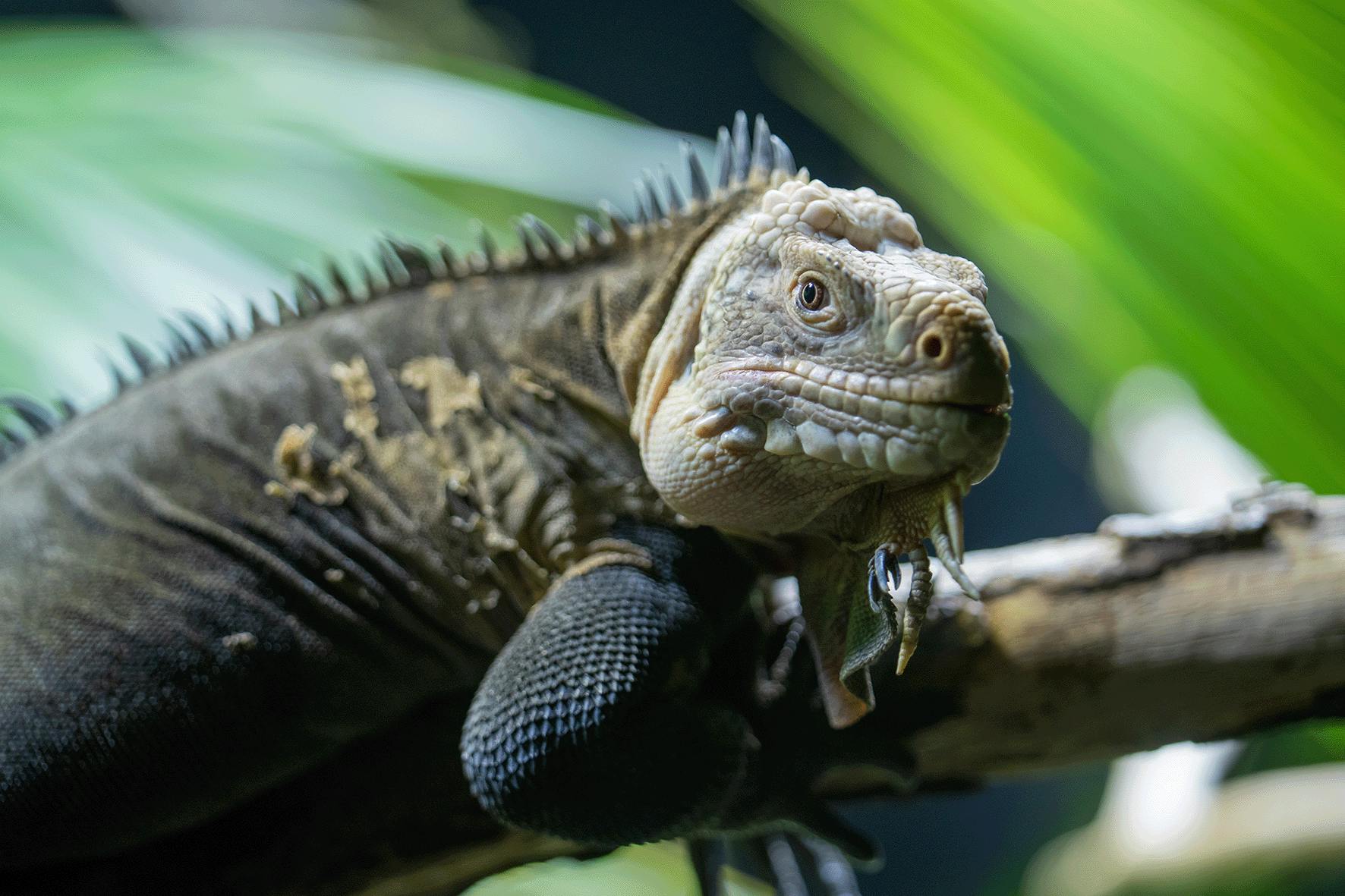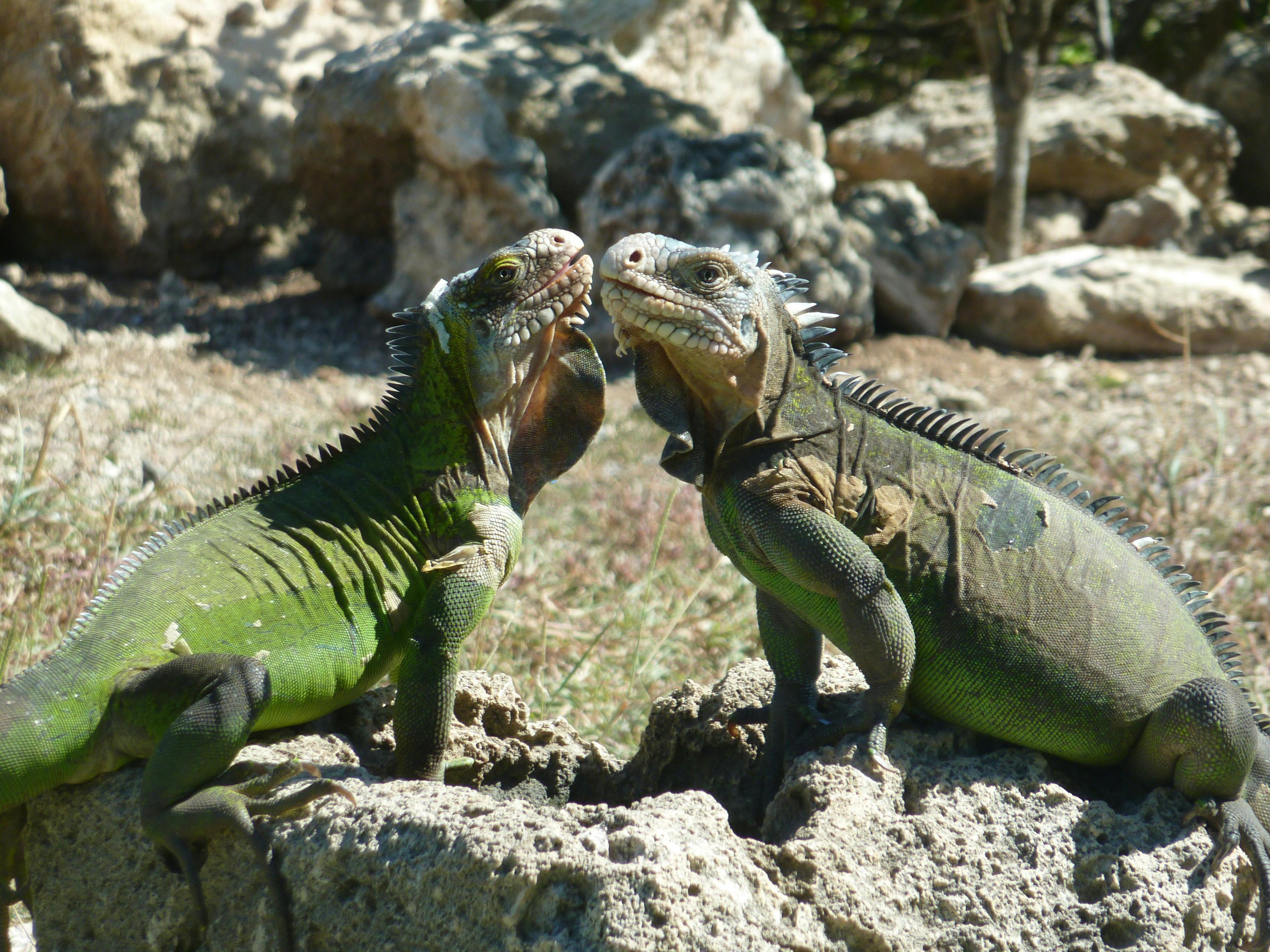Antillean iguana




The Lesser Antillean iguana is a critically endangered lizard from the Caribbean region. This tree-dwelling herbivore is under severe threat, partly due to hunting and the introduction of the closely related green iguana. That's why Diergaarde Blijdorp is committed to protecting this unique species.

25 years
± 108 centimeters
Length: approximately 5 meters
0,8 – 3,6 kilograms

The Antillean iguana is also commonly referred to as the 'tasty iguana'. Its meat was considered a delicacy, hence its scientific name 'delicatissima'. As a result, the iguana was heavily hunted in the past. This is one of the many reasons the species is now critically endangered. Even though hunting is now prohibited in much of its habitat, the impoverished local population still hunts the iguana out of tradition. Additionally, many iguanas are killed by domestic animals, such as cats and dogs.

Diergaarde Blijdorp collaborates with RAVON, an organization dedicated to the conservation of native reptiles, amphibians, and fish, and STENAPA (St. Eustatius National Parks) to protect the Lesser Antillean iguana in the wild. For instance, since 2015, a research project has been undertaken in which the iguanas are fitted with colored beads around their necks. Through this, researchers can count the number of iguanas present on St. Eustatius. At the same time, they also collect blood samples, allowing them to study the genetic diversity within the population. This enables them to assess the overall health of the iguana population on St. Eustatius.
The Lesser Antillean iguana was once found on many of the Windward Islands in the Caribbean, from Anguilla to Martinique. Nowadays, the species has become extinct on some of these islands. One of the islands where it still exists is Sint Eustatius, which is also where the iguanas in Diergaarde Blijdorp come from. The iguana primarily lives in forested and shrubby environments.

The green iguana poses another significant threat to the Lesser Antillean iguana. Increasingly encroaching on the islands that the Lesser Antillean calls home, green iguanas, capable of stowing away on boats or swimming from island to island, are close relatives of their Lesser Antillean counterparts. So much so, they can interbreed, producing fertile offspring that combine traits from both species—a phenomenon known as hybridization. These hybrids, larger and faster-breeding, are outcompeting and slowly replacing the native Lesser Antillean iguanas. This insidious form of takeover is particularly dangerous as it erodes the genetic uniqueness and resilience of the Lesser Antillean iguanas, pushing them toward extinction.
In 2018, four Antillean iguanas were flown from Sint Eustatius to Rotterdam on a government plane. Diergaarde Blijdorp houses these iguanas to help contribute to the survival of the species. The iguanas live in a warm enclosure with plenty of branches to climb on and places to hide. The caretakers provide good nesting sites so the iguanas can reproduce.